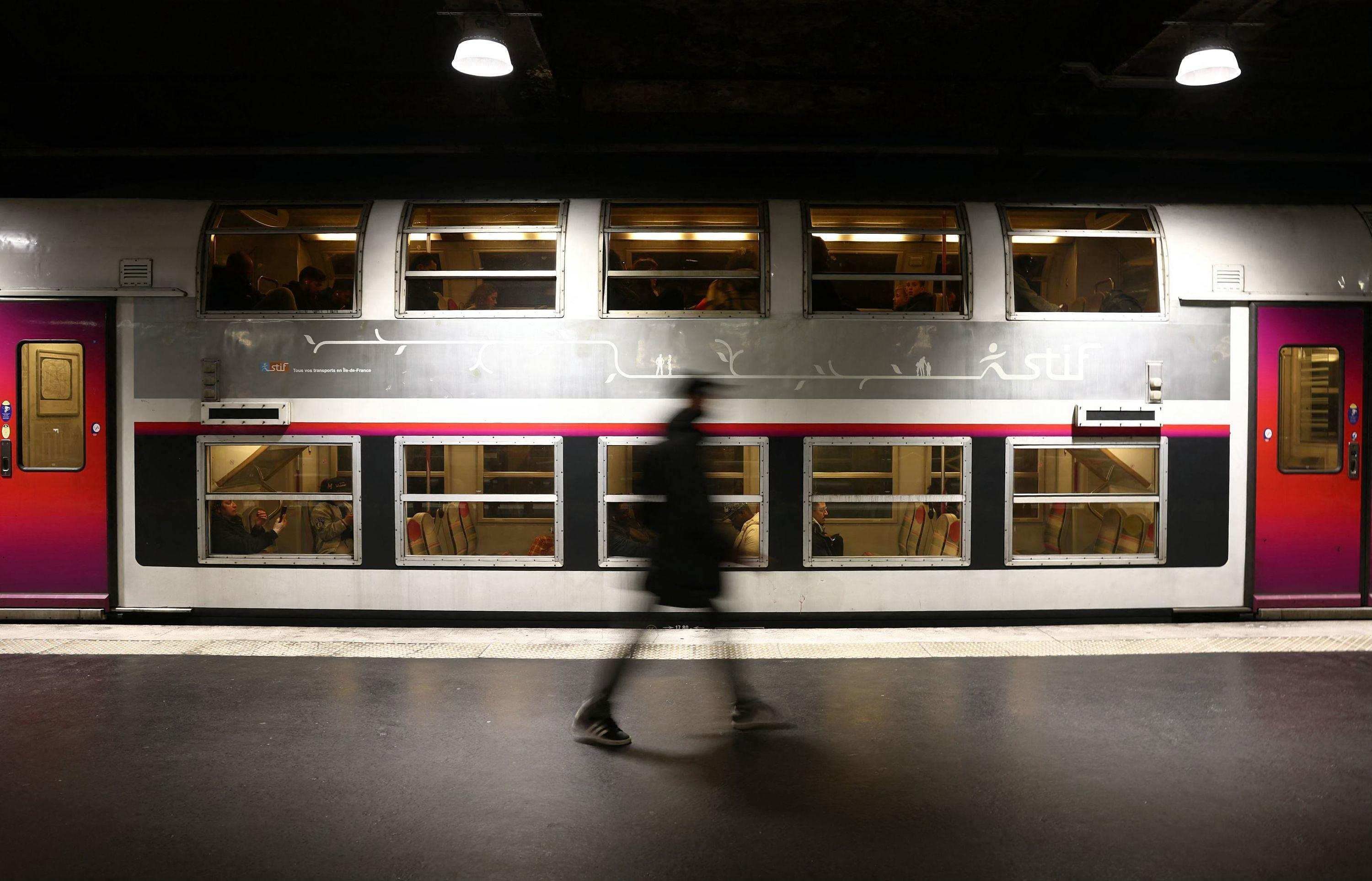Clear mines. Cut short the anxiety-inducing speeches that would turn travel in the Paris region during the Olympic Games into a nightmare. On Monday, Valérie Pécresse, president of the Île-de-France region, wanted to be reassuring one hundred days before the start of the competition where, for the first time, all the sites will be accessible by public transport. “During the Olympic Games, we are going to put in place a transport plan with on average 15% more metro, RER and trains, compared to a classic summer. A size that will accommodate all travelers. The carrying capacity was calculated taking into account Ile-de-France residents who work from August 1 to 11,” she says.
So far, this had not reassured anyone, neither the residents who will need to go to the office, nor the tourists who plan to come for the event: in fact, everyone was wondering if this offer would be reinforced near the competition sites given the influx and departure of several tens of thousands of people in a very short period of time. For example, 1000 people arrive every minute near the Stade de France in Saint-Denis on competition days. This time, Valérie Pécresse, who has control over public transport in the Ile-de-France region through IDFM (Île-de-France Mobilités) which she chairs, has dotted the i's: three lines (the 9 , RER A and RER C) will be able to offer 60% to 70% more capacity. This will be particularly useful for traveling to the west of Paris to Roland-Garros or the Parc des Princes. But line A to the east will also allow you to reach the Vaires-sur-Marne site where the rowing events will take place, going down to Bussy-Saint-Georges.
Traffic will be increased by 23% on eight other lines (RER B, D and E, transiliens lines N, P, etc.). Thus, line N will be in greater demand than usual because it serves Versailles, where the jumping events will take place, and Saint-Quentin-en-Yvelines, which will host golf. To cope with this workload, the recruitment of 300 drivers is being completed. Obviously, this device is not a guarantee against hiccups. For example, certain lines like C and B, which are expected to be particularly busy, currently have regularity and punctuality performances that leave something to be desired. “Each time, we ask for emergency plans to rectify the situation,” underlines Valérie Pécresse.
On certain outlying sites, the journey will not stop at the station or station. At Versailles, for example, shuttles will bring 10,000 spectators to the site per hour. But a tool will reconcile Parisians who stayed during the Olympics and tourists: the Paris 2024 Public Transport app, in pink and purple colors like the signage indicating the competition locations. Launched in May in six languages (French, English, Spanish, etc.), it will be able to indicate the best route to get to the place of your choice based on the distribution of onlookers in Paris. Information - by line, station, section - crucial for Parisians, who when leaving the offices will only have to consult the app to make the right choice. Make way for alternative routes: regular users must “remove their automatic transport systems, the routes we give you are the right ones”, according to Valérie Pécresse.
For example, if the Trocadéro station is indicated as saturated at 6 p.m., the app could advise you to get on the metro one station further (at Passy on line 6 or rue de la Pompe on 9). For their part, tourists who are going to attend an event will be suggested an ideal route with access cards to the sites. And they will also be able to reserve their Paris 2024 pass on their smartphone (16 euros per day to travel anywhere in Île-de-France). The single ticket was set at four euros “so that no one buys any” and thus avoid “embolisms at the counters”, specifies Valérie Pécresse.
A debate that does not concern Ile-de-France residents: by subscribing to Liberté, they will only pay 1.73 euros for their ticket. To reconcile this population with the Olympics, Valérie Pécresse plays one last card. “Thanks to this event, we have done in seven years what we are currently doing in fifteen years or even decades,” she emphasizes. Without the Games, we would never have achieved the objective of delivering the extension of line 14 in June. » From now on, it will take 25 minutes to travel from Orly to Chatelet compared to 50 minutes today. The most enthusiastic will be able to participate in the “marathon for all” on the night of August 10 between Paris and Versailles. For the occasion, RER line C will remain open on its Paris section.

 B:SM will break its investment record this year with 62 million euros
B:SM will break its investment record this year with 62 million euros War in Ukraine: when kyiv attacks Russia with inflatable balloons loaded with explosives
War in Ukraine: when kyiv attacks Russia with inflatable balloons loaded with explosives United States: divided on the question of presidential immunity, the Supreme Court offers respite to Trump
United States: divided on the question of presidential immunity, the Supreme Court offers respite to Trump Maurizio Molinari: “the Scurati affair, a European injury”
Maurizio Molinari: “the Scurati affair, a European injury” First three cases of “native” cholera confirmed in Mayotte
First three cases of “native” cholera confirmed in Mayotte Meningitis: compulsory vaccination for babies will be extended in 2025
Meningitis: compulsory vaccination for babies will be extended in 2025 Spain is the country in the European Union with the most overqualified workers for their jobs
Spain is the country in the European Union with the most overqualified workers for their jobs Parvovirus alert, the “fifth disease” of children which has already caused the death of five babies in 2024
Parvovirus alert, the “fifth disease” of children which has already caused the death of five babies in 2024 Inflation rebounds in March in the United States, a few days before the Fed meeting
Inflation rebounds in March in the United States, a few days before the Fed meeting Video games: Blizzard cancels Blizzcon 2024, its annual high mass
Video games: Blizzard cancels Blizzcon 2024, its annual high mass Falling wings of the Moulin Rouge: who will pay for the repairs?
Falling wings of the Moulin Rouge: who will pay for the repairs? “You don’t sell a company like that”: Roland Lescure “annoyed” by the prospect of a sale of Biogaran
“You don’t sell a company like that”: Roland Lescure “annoyed” by the prospect of a sale of Biogaran Exhibition: in Deauville, Zao Wou-Ki, beauty in all things
Exhibition: in Deauville, Zao Wou-Ki, beauty in all things Dak’art, the most important biennial of African art, postponed due to lack of funding
Dak’art, the most important biennial of African art, postponed due to lack of funding In Deadpool and Wolverine, Ryan and Hugh Jackman explore the depths of the Marvel multiverse
In Deadpool and Wolverine, Ryan and Hugh Jackman explore the depths of the Marvel multiverse Tom Cruise returns to Paris for the filming of Mission Impossible 8
Tom Cruise returns to Paris for the filming of Mission Impossible 8 Skoda Kodiaq 2024: a 'beast' plug-in hybrid SUV
Skoda Kodiaq 2024: a 'beast' plug-in hybrid SUV Tesla launches a new Model Y with 600 km of autonomy at a "more accessible price"
Tesla launches a new Model Y with 600 km of autonomy at a "more accessible price" The 10 best-selling cars in March 2024 in Spain: sales fall due to Easter
The 10 best-selling cars in March 2024 in Spain: sales fall due to Easter A private jet company buys more than 100 flying cars
A private jet company buys more than 100 flying cars This is how housing prices have changed in Spain in the last decade
This is how housing prices have changed in Spain in the last decade The home mortgage firm drops 10% in January and interest soars to 3.46%
The home mortgage firm drops 10% in January and interest soars to 3.46% The jewel of the Rocío de Nagüeles urbanization: a dream villa in Marbella
The jewel of the Rocío de Nagüeles urbanization: a dream villa in Marbella Rental prices grow by 7.3% in February: where does it go up and where does it go down?
Rental prices grow by 7.3% in February: where does it go up and where does it go down? Even on a mission for NATO, the Charles-de-Gaulle remains under French control, Lecornu responds to Mélenchon
Even on a mission for NATO, the Charles-de-Gaulle remains under French control, Lecornu responds to Mélenchon “Deadly Europe”, “economic decline”, immigration… What to remember from Emmanuel Macron’s speech at the Sorbonne
“Deadly Europe”, “economic decline”, immigration… What to remember from Emmanuel Macron’s speech at the Sorbonne Sale of Biogaran: The Republicans write to Emmanuel Macron
Sale of Biogaran: The Republicans write to Emmanuel Macron Europeans: “All those who claim that we don’t need Europe are liars”, criticizes Bayrou
Europeans: “All those who claim that we don’t need Europe are liars”, criticizes Bayrou These French cities that will boycott the World Cup in Qatar
These French cities that will boycott the World Cup in Qatar Euroleague: at the end of the suspense, Monaco equalizes against Fenerbahçe
Euroleague: at the end of the suspense, Monaco equalizes against Fenerbahçe Women's Six Nations: Where to see and five things to know about France-England
Women's Six Nations: Where to see and five things to know about France-England Liverpool: it is confirmed, Slot will succeed Klopp on the Reds bench
Liverpool: it is confirmed, Slot will succeed Klopp on the Reds bench Ligue 1: Montpellier and Nantes back to back, two reds in stoppage time
Ligue 1: Montpellier and Nantes back to back, two reds in stoppage time


















